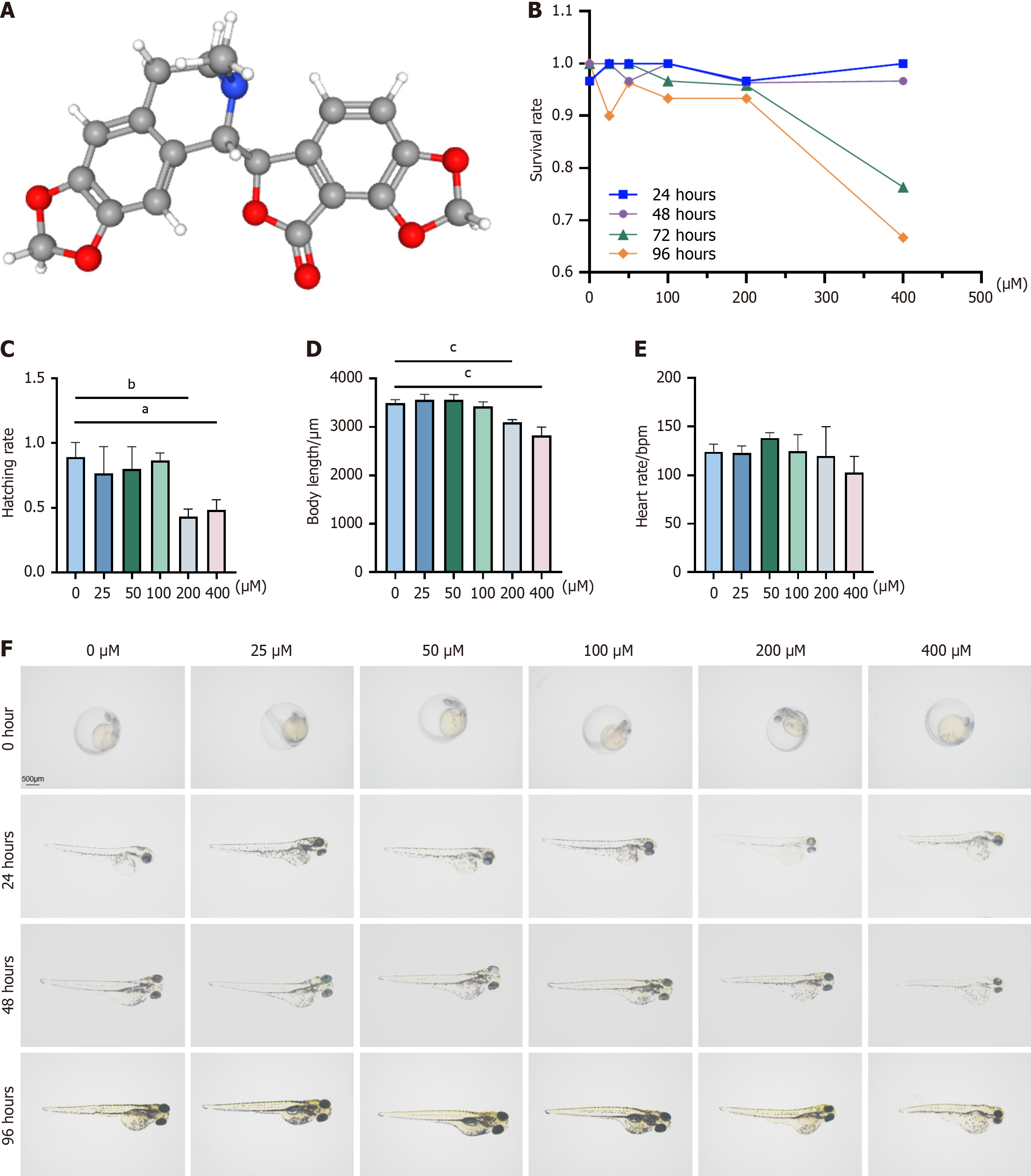Copyright
©The Author(s) 2025.
World J Gastroenterol. May 7, 2025; 31(17): 105438
Published online May 7, 2025. doi: 10.3748/wjg.v31.i17.105438
Published online May 7, 2025. doi: 10.3748/wjg.v31.i17.105438
Figure 1 Developmental toxicity of bicuculline in zebrafish embryos.
A: Chemical structure of bicuculline (BIC) derived from PubChem; B: Survival rate of zebrafish embryos exposed to 0-400 μM BIC for timepoints ranging from 24 to 96 hours; C: Hatching rate of zebrafish embryos exposed to from 0 to 400 μM BIC for 96 hours; D: Body length of zebrafish embryos exposed to 0-400 μM BIC for 96 hours; E: Heart rate of zebrafish embryos exposed to 0-400 μM BIC for 96 hours; F: Phenotypic changes in zebrafish embryos exposed to 0-400 μM BIC for 24, 48, 72, and 96 hours. aP < 0.05; bP < 0.01; cP < 0.001.
- Citation: Wang XM, Dai Z, Lu DJ, Bao CQ, Yang NB, Zhou YP. Bicuculline ameliorates metabolic dysfunction-associated steatotic liver disease by inhibiting the nuclear factor-kappa B pathway and reducing lipid accumulation. World J Gastroenterol 2025; 31(17): 105438
- URL: https://www.wjgnet.com/1007-9327/full/v31/i17/105438.htm
- DOI: https://dx.doi.org/10.3748/wjg.v31.i17.105438









